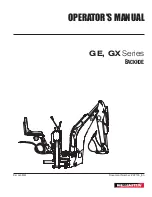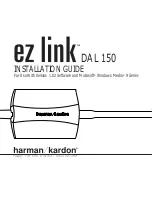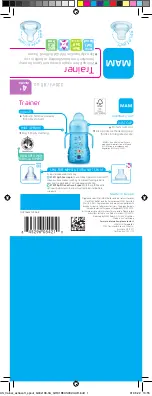
Co de 39
Nugget
Configuration Command Reference
9-85
9
Example:
You want to set a postamble that includes quotation marks. To scan a bar code label that
includes quotation marks, you must configure the terminal to use Code 39 in Full ASCII
mode. For help, see “Code 39” earlier in this chapter.
Enter the postamble by scanning this full ASCII bar code label:
Set Postamble to “B”
*/D/KAE/B/B/BB/B/B/B*
*$+AE"""B"""*
You must enclose the data within quotation marks and precede each quotation mark with
another quotation mark so that the quotation marks are not treated as the end of the data.
Preamble
Purpose:
Sets the preamble that precedes any data you scan with the terminal. Common preambles
include a data location number or an operator number.
You can set the preamble to use characters from the extended ASCII character set.
However, you cannot scan in extended ASCII characters in the Preamble command. You
need to use the TRAKKER Antares 2400 Menu System. For help, see “Entering ASCII
Control Characters” in Chapter 3.
Syntax:
ADdata
Acceptable values for data are up to 25 ASCII characters. When you enter the AD
command without data, the preamble is disabled. If you are entering quotation marks as
data or grouping configuration commands, you need to enclose the data within quotation
marks (see the example).
Default:
No characters (disabled)
Scan:
To disable the preamble, scan this bar code:
Disable Preamble
*$+AD*
*$+AD*
Or:
To set the preamble to an ASCII character string:
1. Scan this bar code:
Enter Accumulate Mode / Set Preamble
*+/$+AD*
*+/$+AD*
Summary of Contents for Trakker Antares 2420
Page 1: ...TRAKKERAntares 2420and2425 Hand HeldTerminal P N 064024 006 User s Manual...
Page 15: ...nuggetf code39 Contents xv Glossary Index G I...
Page 16: ...xvi...
Page 24: ...xxiv...
Page 25: ...nuggetf code39 Getting Started 1...
Page 26: ...1 2...
Page 60: ...1 36...
Page 61: ...Learning How to Use the Terminal 2...
Page 62: ...2 2...
Page 103: ...Co de 39 Nugget Configuring the Terminal 3...
Page 104: ...Co de 39 Nugget 3 2...
Page 134: ...3 32...
Page 135: ...Operating the Terminal in a Network 4...
Page 136: ...4 2...
Page 173: ...Using Custom Applications 5...
Page 174: ...5 2...
Page 193: ...Troubleshooting 6...
Page 194: ...6 2...
Page 219: ...Running Diagnostics 7...
Page 220: ...7 2...
Page 243: ...Reader Command Reference 8...
Page 244: ...8 2...
Page 268: ...8 26...
Page 269: ...Configuration Command Reference 9...
Page 270: ...9 2...
Page 389: ...Terminal Specifications A...
Page 390: ...A 2...
Page 404: ...A 16...
Page 405: ...Full ASCII Charts B...
Page 406: ...B 2...
Page 415: ...International Character Support C...
Page 416: ...C 2...
Page 427: ...Using the Default Applications D...
Page 428: ...D 2...
Page 438: ...D 12...
Page 439: ...Glossary G...
Page 440: ...G 2...
Page 463: ...Index I...
Page 464: ...I 2...
Page 480: ...I 18...
















































